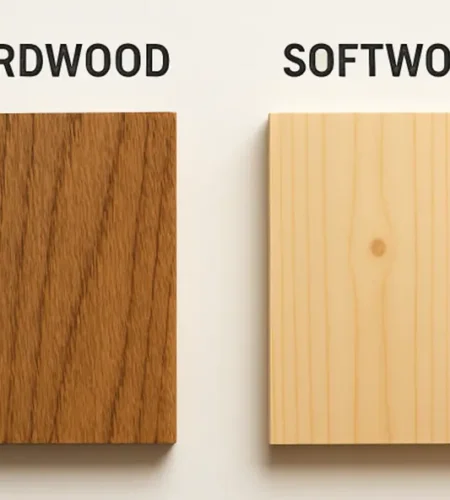Choosing the perfect wood species for your home does more than define its visual appeal—it also sets the tone and atmosphere, ensuring your space reflects your taste and lifestyle. With various wood types available, finding the right match can feel daunting. Exploring resources such as Denver engineered hardwood can help you navigate the many choices available and clarify what’s best for your home’s unique character and practical demands.
Whether you’re renovating, building from scratch, or simply updating a single room, understanding the nuances of different wood species will help you shape a living environment that’s both stunning and functional.
Understanding Wood Types: Hardwoods vs. Softwoods
Wood falls into two main categories, each offering distinct properties and uses:
- Hardwoods: Sourced from deciduous trees, hardwoods like oak, maple, and walnut are highly durable. Their density and resilience are ideal for flooring, cabinetry, and furniture destined for heavy use or high-traffic areas.
- Softwoods: Produced by coniferous trees, softwoods such as pine or cedar are typically lighter and more cost-effective. These woods are frequently chosen for decorative accents, wall paneling, or elements where wear-and-tear is minimal.
Your decision between hardwood and softwood should be based on the function and longevity you expect from your home’s particular piece or surface.
Matching Wood to Your Home’s Style
The species and finish you select should work in harmony with your home’s interior design scheme:
Traditional Homes
Opt for rich, deep-toned woods like mahogany or cherry. These species are cherished for their timeless beauty and ability to lend rooms a sense of warmth and sophistication.
Modern Interiors
Lighter woods such as birch, white oak, or ash bring an airy, sleek vibe, keeping the space uncluttered and contemporary.
Rustic or Farmhouse Styles
Embrace reclaimed woods or intentionally distressed finishes. These options add character, texture, and a sense of history to your living environment.
Selecting woods that complement your home’s overarching style ensures a unified and aesthetically pleasing space.
Considering Durability and Maintenance
The performance of wood surfaces is dictated by their hardness and ability to resist daily wear:
For High-Traffic Spaces
Hardwoods like oak and hickory are top choices since they are less prone to dents and scratches, making them perfect for entryways, kitchens, and family rooms.
For Low-Traffic Areas
Softer woods such as pine may be perfectly suitable for bedrooms or formal dining areas, where footfall is minimal and the wood is less likely to be damaged.
It’s important to consider how your wood will look and what it will endure, as some species require less upkeep while others need regular care to maintain their appearance.
Exploring Grain Patterns and Colors
The visual impact of wood is deeply influenced by its grain and color:
- Prominent Grains: Woods like oak showcase visible, textured patterns, adding a dynamic and tactile layer to your floors or furniture.
- Subtle Grains: Maple offers a more understated appearance with a smooth, uniform look that fits minimalist or Scandinavian-inspired designs.
- Natural Hues: The deepening red-browns of cherry or the light golden tones of ash can set a room’s emotional tone. Consider how natural light and time will affect your wood’s color before making a final choice.
Selecting grain patterns and colors should align with both your aesthetic vision and the emotional mood you wish to evoke in your space.
Budget Considerations
The choice of wood can have a significant impact on project costs. The rarity, source, and finish of the wood influences prices:
- Exotic Hardwoods: Brazilian cherry and teak are visually striking and durable, but generally cost more and may require longer lead times.
- Domestic Woods: Options such as oak and maple are readily available, more affordable, and remain reliable choices for most residential projects.
Balancing your vision with the constraints of your budget is vital when picking wood species, whether for a single-room project or an entire remodel.
Sustainability and Environmental Impact
Environmentally conscious design begins with sourcing. Opting for FSC-certified wood or reclaimed materials helps support responsible forestry and minimizes your ecological footprint. Reclaimed or salvaged wood not only preserves resources but also lends a unique story to your home’s aesthetic.
Making sustainable choices not only benefits the planet but also ensures that your renovation has a lasting positive impact.
Consulting with Professionals
Expert advice makes it easier to navigate the endless options and technical considerations of wood selection. Consulting experienced carpenters, interior designers, or reputable contractors streamlines the process and helps avoid costly missteps. You’ll also benefit from insights on installation methods, finishes, and maintenance ways tailored to your home and lifestyle.
A professional partner can convert your vision into a reality, ensuring your wood choices bring lasting beauty, comfort, and value to your living space.
Also read-iPhone Jokes: Hilarious Tech Humor to Brighten Your Day


Comments